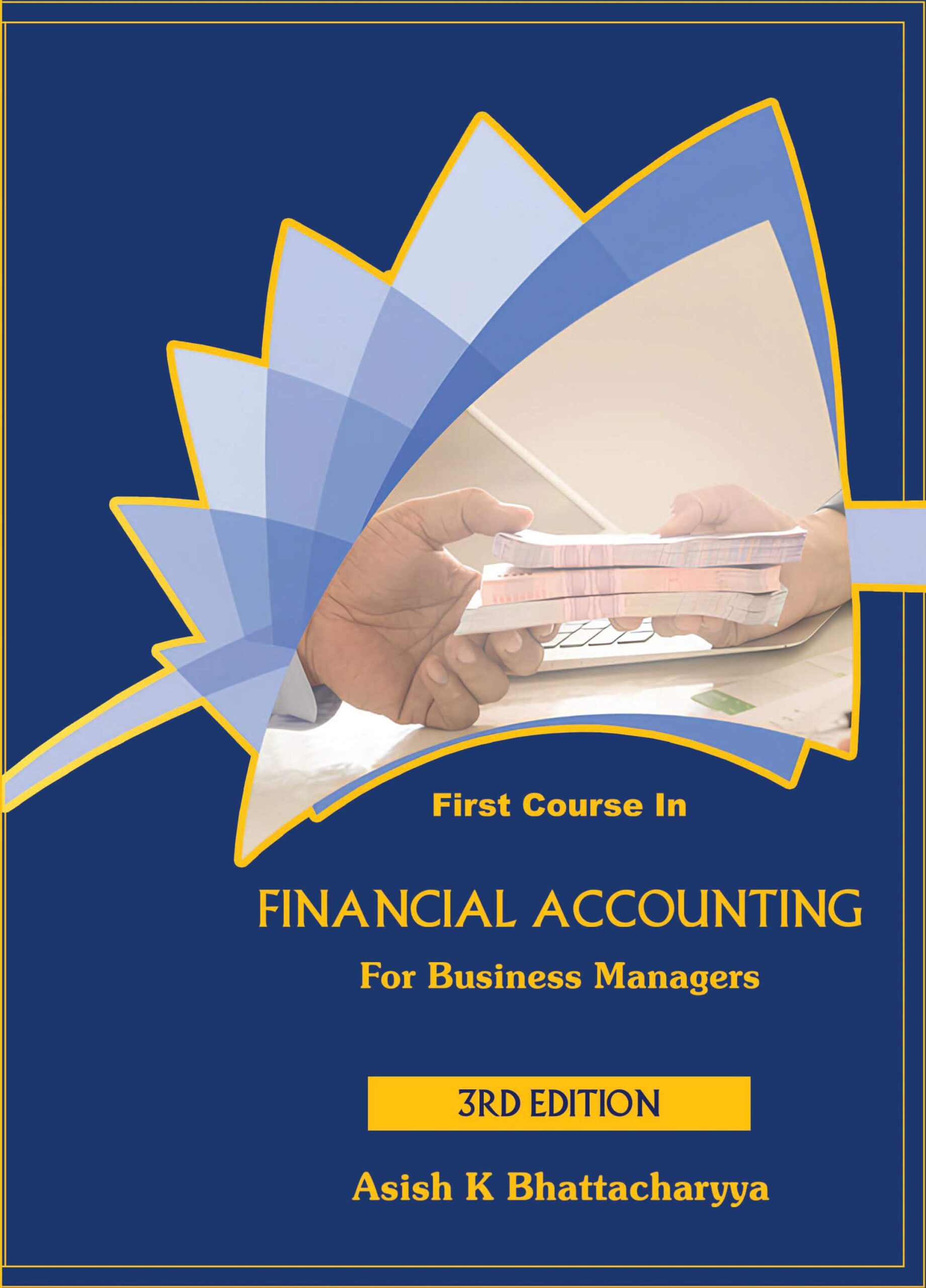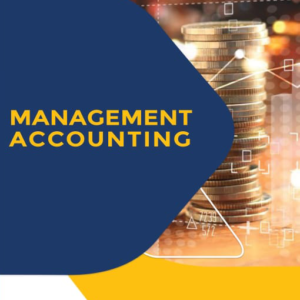Description
For Business Managers
by Asish K Bhattacharyya
First Published: 2022
Second Edition: 2023
Third Edition: 2024
ISBN: 978-81-969088-1-2
Preface to the First Edition
The title has come out of my experience of teaching Financial Accounting in the first semester of MBA programmes since 1992 in India’s top B-schools including Indian Institute of Management Calcutta (IIMC) and SPJIMR, Mumbai. Although, the title covers the standard material being used in MBA programmes, my disposition, which is liked by my students, is little different from others. Presentation of the material in this title reflects the same.
I have presented the material in jargon free language, keeping in mind that students with variety of educational background join MBA programmes and will not opt for Finance specialisation. I have included material that is essential and can be covered in 30-45 hours of classroom learning and explained each concept with simple examples. Some additional materials like lease accounting and consolidation financial statements are added for ambitious students. Indian case studies have been used wherever appropriate.
Learning accounting requires practice. Hence, sufficient questions and problems have been included as review questions and assignments. Solutions to review problems have also been provided. Focus is on variety rather than numbers.
Chapter-end assignments are divided into six sections – conceptual understanding, critical thinking and situation analysis, decision-making, holistic business acuity, ethical issues and problem solving. Few questions are included in sections other than conceptual understanding and problem solving, which instructors can discuss in the class or provide as assignments to enable students to appreciate the linkages between financial accounting and other business functions and ethical issues in decision-making.
Asish K Bhattacharyya
New Delhi
Preface to the Second Edition
I have received good reviews for the first edition of the book from instructors and students. They appreciated the content, pedagogy, and lucidity of the presentation. They liked the real-life examples presented in the book. Therefore, I have kept the structure of the book the same. I have not added any new material except a chapter on accounting ethics. Rather I have controlled my temptation to add new material, as I do not want to increase the number of pages in the book. I included questions on ethical issues in chapter-end assignments in the first edition. The new chapter will help students understand ethical principles and ethical issues accountants face and address ethical issues included in assignments.
Copy editing errors crept in the first edition. All those errors have been corrected. The new publisher has decided to improve the production quality to make the book a pleasant read.
I hope that more and more instructors will use the book for UG and graduate programmes in management.
Asish K Bhattacharyya
New Delhi
February 15, 2023
Preface to the Third Edition
I am quite happy with the feedback from students and instructors. They found that the pedagogy used is appropriate for management students studying the subject for the first time. Even those from a Commerce or Business Administration background find the approach new and refreshing. Therefore, I have not changed the structure, presentations, and examples. However, I have added some new examples and simplified the language wherever necessary.
I have substantially revised the chapter on Financial Statement Analysis to simplify the calculations and presentations. I have also used the financial statements for the year 2022-2023. In the ratio analysis, I started with the DuPont Analysis to improve the flow of discussion.
Unfortunately, mistakes crept into the second edition of the book. The publisher and I have made efforts to make the third edition error-free. We are largely successful.
I hope that students and instructors will find the revisions helpful.
Asish K Bhattacharyya
New Delhi
April 15, 2024
Published by: Nonlinear Insights (OPC) Pvt. Ltd.
Publication Division
Content
CHAPTER-1: Accounting as an Information System
The Nature and Purpose of Accounting
Business purpose
Business activities
Financial capital
Firm structures –
Sole Proprietorship
Partnership
LLP
Private Limited Company
Corporate governance
Four pillars of financial reporting –
GAAP
Accounting conventions
Accounting ethics
Internal controls
Qualitative characteristics of financial statements
Financial statements
Annual report
Management commentary
CHAPTER-2: Balance Sheet and Income Statement- Relevant Concepts
Balance Sheet And Profit And Loss Account Of Banks
Accounting equation
Assets
Liabilities
Income
Expenses
Aggregation and disaggregation
Commonly used groupings –
Assets
Liabilities
Income
Balance sheet presentation –
Division II of schedule III of the Companies Act 2013
GAAP on presentation of assets and liabilities in the balance sheet
Statement of profit and loss format –
Division II of schedule III of the Companies Act 2013
GAAP on presentation Profit and loss
CHAPTER-3: Accounting Cycle: Bookkeeping
Accounting cycle
General ledger
T Account
Books of primary entry
Double entry bookkeeping –
Debit-credit rules
Books of prime entry
Cash book
Purchase day book
Sales day book
Subsidiary ledgers
Trial balance
CHAPTER-4: Accounting Cycle: Preparation of Financial Statements
Accrual Accounting adjustments
Adjustment for depreciation and amortisation
Provision for doubtful debts
Bank reconciliation statement
Preparation and presentation of financial statements of trading firms –
Trading account
Profit and loss account
Balance sheet
The preparation and presentation of Financial statements of manufacturing firms
CHAPTER-5: Cash Flow Statement
Statement of cash flow –
Basic principles
Cash and cash equivalents
Classification of activities
Cash flow from operating activities –
Direct method
Indirect method
Cash flow from investing activities
Cash flow from financial activities
Exchange difference – treatment in cash flow statement
Cash flow ratios –
Cash flow efficiency
Cash flow yield ratio
Cash flows to sales ratio
Cash flows to assets ratio
Free cash flow
CHAPTER-6: Financial Statement Analysis
Vertical analysis
Horizontal analysis
Purpose of financial ratio analysis – cross sectional analysis and trend analysis
Limitations of financial statement analysis
Reorganisation of financial statements
Summary measure of financial performance –
ROIC
Decomposition of ROIC
ROE
Decomposition of ROE
DuPont model
Economic Value Added
Activity ratios
Profitability ratios
Earnings per share (EPS)
Working capital management –
Inventory turnover
Receivables turnover
Working capital cycle
Conversion cycle
Financial health –
Solvency ratios
Liquidity ratios
Cash-based ratios
Evaluating market strength –
P/B ratio
P/E ratio
Altman’s Z score
CHAPTER-7: Evaluating Group Financial Position and Performance
Consolidated financial statements – basic principles 409
Consolidation process 411
Adjustments for special items in the consolidated balance sheet
and statement of profit and loss 413
Financial ratios to evaluate the group performance 421
CHAPTER-8: Property, Plant and Equipment 443 – 506
Definition 443
Recognition principles 449
Measurement at recognition (initial measurement) 454
Measurement after recognition (subsequent measurement) 467
Depreciation –
Accounting principles 473
Depreciation methods 477
Impairment 482
CHAPTER-9: Other Non-financial Assets and Financial Assets 507 – 584
Intangible assets –
Recognition 509
Measurement 510
Impairment 511
Right-to-use assets–
Recognition 517
Measurement 517
presentation 517
Lease contract –
Characteristics of lease contract 520
Recognition and Measurement 524
Sale and lease back transaction 527
Investment property –
Recognition 531
Measurement 531
Inventory valuation –
Accounting principle 533
Net realizable value 534
Cost determination 534
Cost formulas 543
xvi
Financial assets –
Recognition 549
Measurement 553
Impairment 557
CHAPTER-10: Liabilities, Income and Expenses 585 – 645
Liabilities –
Recognition 585
Measurement 586
Measurement of provision 587
Accounting for post-retirement defined benefits obligation 588
Revenue –
Identification of contract 593
Recognition 593
measurement 593
Performance obligation 596
Transaction price 602
Application issues 618
Other income –
Interest income 626
Dividend 626
Government grant 626
Expenses –
Interest expense 629
Depreciation 62
CHAPTER-11: Accounting Ethics 646 – 661
Nature of Ethics 646
Code of Ethics for Professional Accountants 650
Profession Competence and Due Care 652
Threats to Compliance with the Fundamental Principles 655
Ethical Dilemma 657
Protecting the reputation of a Colleague 658
Intimidation 65





